Ross Landenberger is a photographer based in Atlanta, Georgia. Raised in East Tennessee, he holds a B.S. from the University of Tennessee, Knoxville. His work currently explores the intersections of queer identity and skateboarding, and for the last two years, he has been photographing queer skateboarders around the United States and England. His photographs have been featured on NBC News and in Xem Skaters Genderqueer Skate Zine.

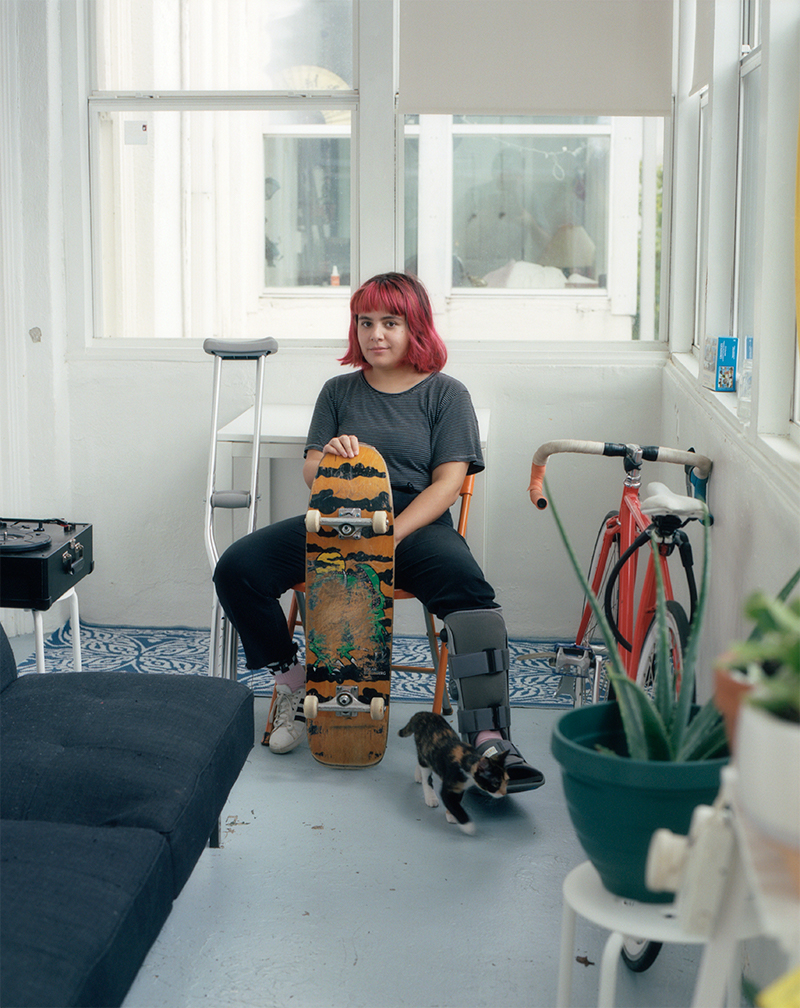
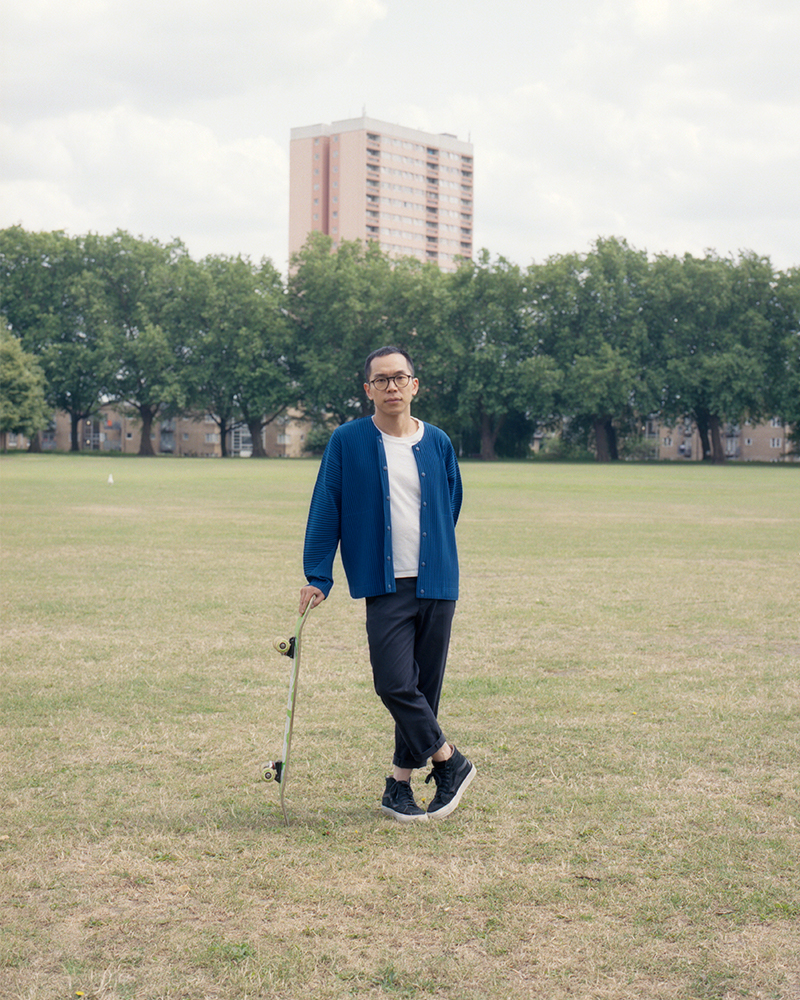
Queer Skateboarding
Only in recent years, the intersections between skateboarding and queerness have emerged. This subculture is becoming a new paradigm for diversity and acceptance in what was previously a predominantly masculine sport. Growing up queer around skateboarders, it was apparent that as a subculture, they opposed many aspects of tradition and popular culture. Skateboarders support alternative timelines, and they are not living for birth, marriage, reproduction, and death. From my observation, skateboarders are living for something other than longevity; they are living with the urgency of now in mind. Skateboarders, much like queer people, are living life unscripted by tradition. However, skateboarders fail to support this comparison because of the ingrained homophobia and sexism within the sport.
These attitudes in skateboarding have made myself and many other queer people feel isolated, causing most to never begin learning to skate. It was not until the last few years when queer skateboarding groups began emerging through social media that formal spaces were being created within skateboarding for queer people by queer people. Skateboarding is an extremely prolific and visual culture: skaters have always identified themselves by their art, music, clothes, language, hair, and bodies. So what is this new generation of queer skateboarders supposed to do? Are they supposed to wear brands and adopt a vernacular from a subculture that did not always welcome them? As a response, they are developing their own visual identifiers like skateboard graphics and clothing, subverting objects that belong to and were created by skateboarding as a signal to other queer people that skateboarding is for them too.
Skateboarding was founded with counter-hegemonic ideals, yet the subculture possesses contradictions to that because of the homophobia and sexism present. With this project, I hope to empower marginalized people, to show them that they are not alone in trying to carve out a place for themselves in an activity or subculture that was created without them in mind.

J: Hi Ross, thanks for talking with me.
R: Happy to talk!
J: Definitely always looking to get more queer voices online. I’m pretty familiar with your Queer Skateboarding project and was wondering if you can you talk about any other projects that came before, or how you found your voice photographing initially?
R: I got into photography initially because of that Nintendo 64 game Pokémon Snap where you drove around and took pictures of Pokémon. While my family took a lot of pictures and mementos all the time, and even though this was a virtual camera, this was my first time using a camera myself. I also had MySpace and Flickr accounts growing up, taking and posting random pictures with a camera I got for Christmas. Nothing took a form until I got to college and I took an intro to photography class … and then realized making a cohesive body of work was the thing to do. After that, I got a Contax t2 and started doing like, party pictures, at my college. Our LGBT resource center had been closed and then there were a couple of incidents where students were harassed or injured. So there was a resurgence of having queer-only parties, or intended safe spaces for queer people. Eventually, after I graduated, I got the [Mamiya] RZ67 and went from there. I don’t like to focus on gear, but definitely getting that camera was my practice connecting with how I actually wanted it to look.
J: So then from there, did you immediately start photographing skateboarders? How did that come about?
R: Growing up, I was always into skateboarding. A big part of skateboarding is the visual culture: the videos, the magazines, the clothes, all that. I was taking pictures and videoing skateboarders as I grew up. When I got to high school, I stopped because I could really point out what I didn’t like about skateboarding culture. It wasn’t until Brian Anderson, this professional skateboarder who was one of the first to be very accomplished and respected as a skateboarder, came out [in 2016]. Once that happened, I started finally seeing an intersection between queerness and skateboarding. I always thought of them as very different, so once that idea came into my head, I wanted to make a visual representation of that much like skateboarding is so focused on creating for yourself … like maybe there is this weird utopia for queer people who skateboard.
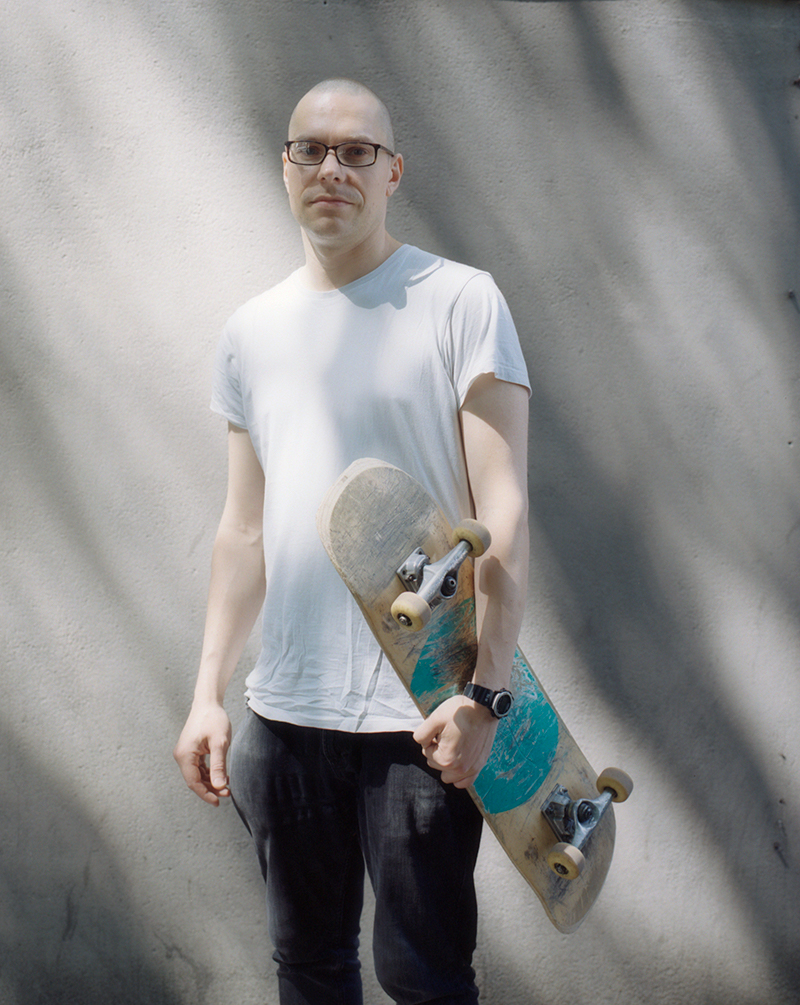
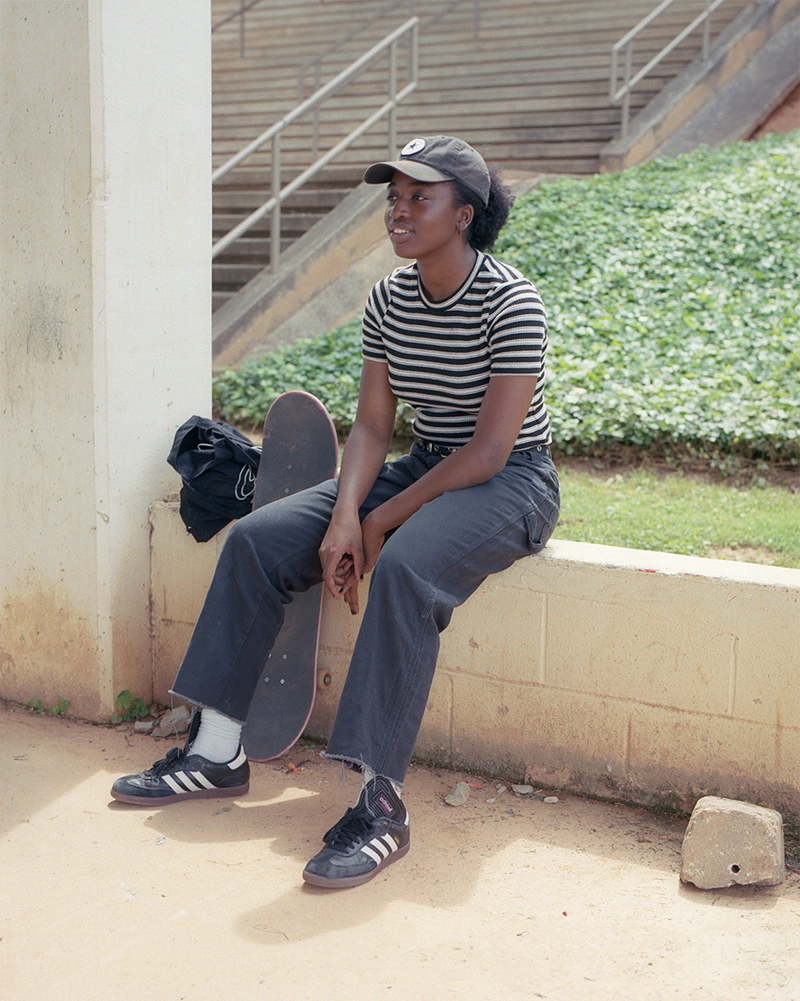

J: That makes sense as a natural progression from these party pictures of safe spaces for queer people to create your own in a culture that doesn’t accept it. How do you meet people and what kinds are areas are you choosing to photograph them in?
R: I mostly have met people through social media. At the beginning, it was just kind of finding people that I had encountered in person. The first images I made were the ones from London, because I had gone to a queer skateboarding meet-up there. Then, when I came back eventually, I messaged the people I had met and asked to make pictures. From there, I was able to make Instagram or Twitter posts. One exception is the picture of the person in the pink basketball dress; that’s Jason. I’ve been friends with them online for years. We were on this skateboarding forum together, and we would Skype and all that. Looking back, we were moving to those virtual spaces in our houses because we weren’t feeling good about being involved in skateboarding culture at the time.
R: As far as environments – at first I wanted to photograph in skateparks, but I’ve been slowly been going towards nature and foliage. That was another instance of making images and then looking back and it making sense … it gives off this garden of eden [aura], I’ve been moving towards that as well as doing more traditional skateboarding settings. It ends up boiling down to what is the most convenient. One thing to mention too, I always meet with people at a skate spot or skatepark, and we talk, get to know each other, and skate a bit. Then, we’ll photograph. I’ll usually move away because a lot of the times, it becomes uncomfortable if there are a lot of people in the skatepark. A lot of [my subjects], if they don’t fit in the visual language of skateboarding, they’re kind of othered from the start.
J: I can’t imagine trying to get photographs of queer people in a very heteronormatively public and masculine space. I noticed you photographed queer skateboarders here across the US and also in some other countries – do you photograph differently in certain places or types of areas? It seems like physical place is sometimes removed from your images, leaving only a more vague environment.
R: I probably do photograph differently in less urban areas, so like the way I photograph in certain [urban] areas of Atlanta versus when I was in Texas outside San Antonio. I want to try to highlight the fact it isn’t an urban space, not a city. I want to show that there are others like me, who grew up not in a city and skateboarding, and don’t have access to [queer skateboarding groups].
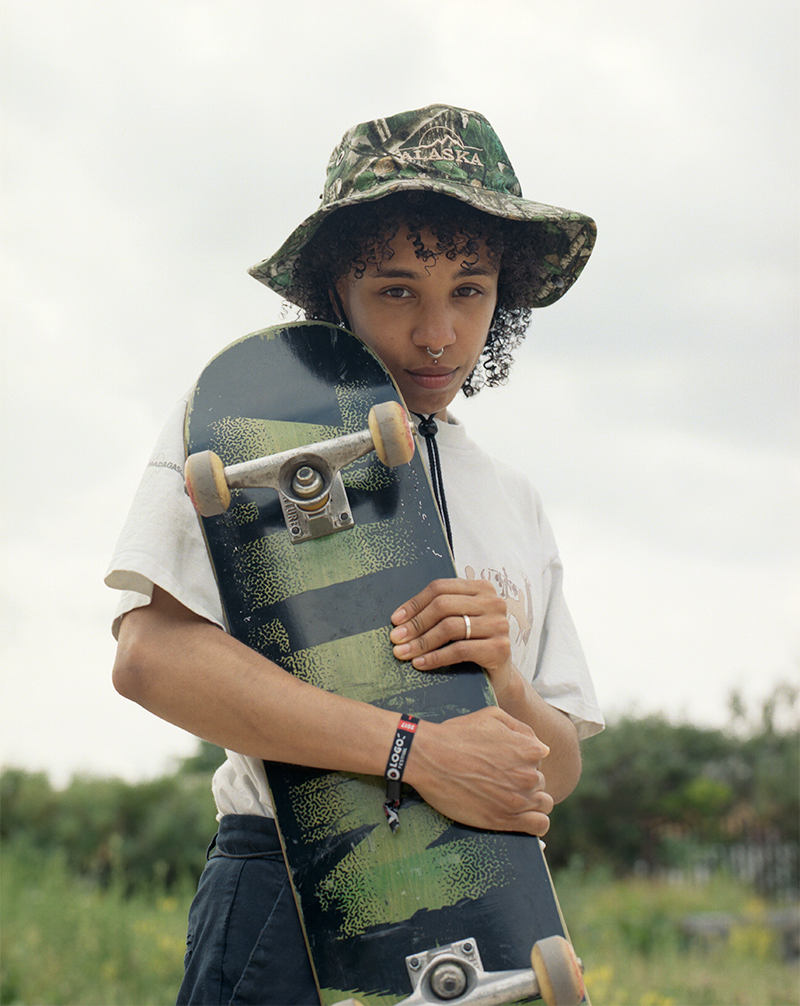
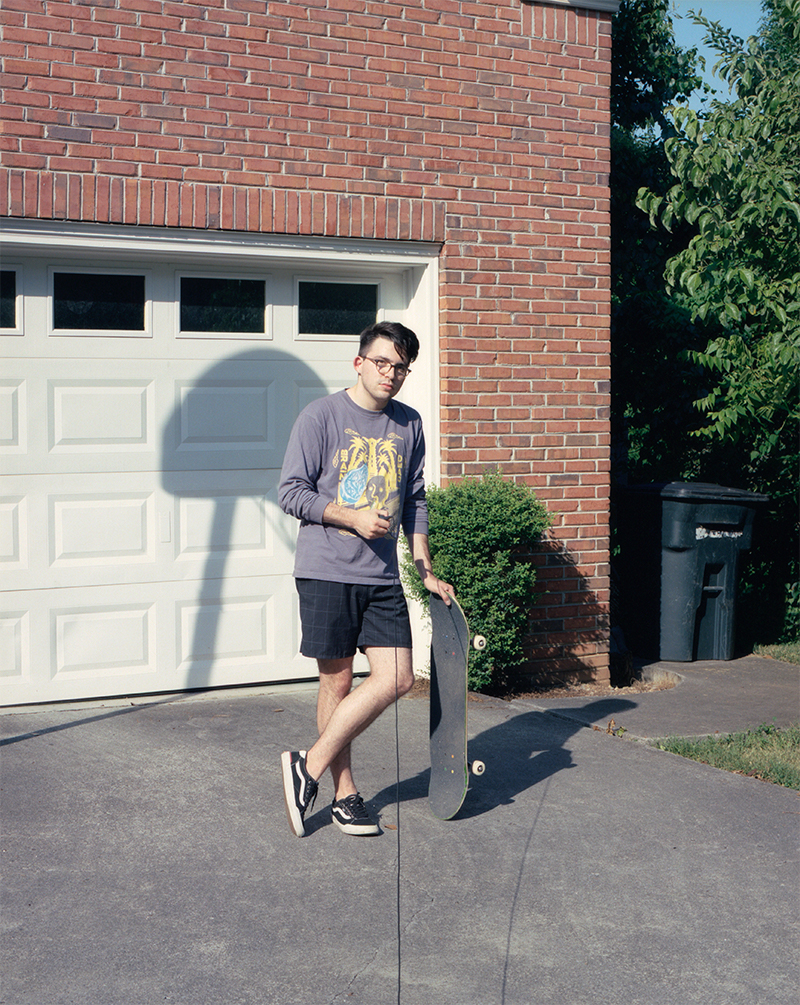
J: I think that comes through; it’s a very cohesive project despite all the different landscapes. Queer culture is so often focused on city-hubs, it can be exhausting. Have you ever thought about how you’re inserting yourself into the project, or do you find you’re always behind the camera?
R: I have a self-portrait in the edit. For a while, I was a bit conflicted about that. I’m a cis gay white male, and I’ve been photographing non-binary people, trans people, people of color. Through photographing all these people and going to meet-ups, I’ve gotten a much better grasp on the privilege I hold in a skatepark environment. Talking to other people [who aren’t white cis men], there’s a lot more they have to think about when going into these spaces and so, I was trying to figure out if it was an appropriate thing to do to insert myself into the project. Eventually, I was getting so much fulfillment from organizing meet-ups and meeting different people, that I figured out I am still part of the community and contributing to it actively. That was why I ended up including myself in it. I [shot the self-portrait] in my parent’s driveway, going back to that childhood experience.
J: We know that people want to see queer people be visibly queer, for their consumption, and often talk about the visual culture you reference being co-opted loudly by companies when in reality queer coding can often be subtle. How do you approach this when thinking about what kind of representation you’re putting out?
R: I look to include however the person I’m photographing expresses their queerness. I’ll talk about that with people while photographing and before. There is definitely a preconceived idea of how [queer] looks, popular expressions of queerness. I usually just try to go with what the person I’m photographing is comfortable with. Like that image with Jason [in the pink basketball dress], we talked about that relationship, we wanted the limp wrist … with some people, I definitely workshop poses ahead of time. With other people who express their queerness in a different way or less in how they dress, I just try to respect each person’s individual expression. I want to show visually queer people in skateboarding, but I also want to honor the fact that it doesn’t look one way. There are all kinds of people trying to make space in skateboarding.
J: It’s interesting that you mention photographing people you know; it’s almost like you acknowledge the level of performance that’s happening a bit more. You did already talk about this a bit, but growing up in Tennessee and moving to Atlanta – how did these places affect your work and process?
R: So when I was living in Tennessee, it was the area I had grown up in and all I knew. I grew up in Oakridge, Tennessee, which is about a 20-minute drive from Knoxville, where I went to college. I was very much contained to that area. Since I knew it well, things didn’t always seem as novel, and you don’t always notice differences or interesting things. Also at the same time, before moving to Atlanta, I was living with my parents. Once I moved to Atlanta and had a feeling of autonomy, things being new, and exposure to a different community I was more comfortable with, these things have been reflected in my way of thinking about my photos and my enthusiasm for making them. While I was making photos my whole life in Tennessee, I didn’t have a community of people who were interested in making similar work or photographs about something [specific]. When I moved to Atlanta, I started to meet more people who were interested in that as well.
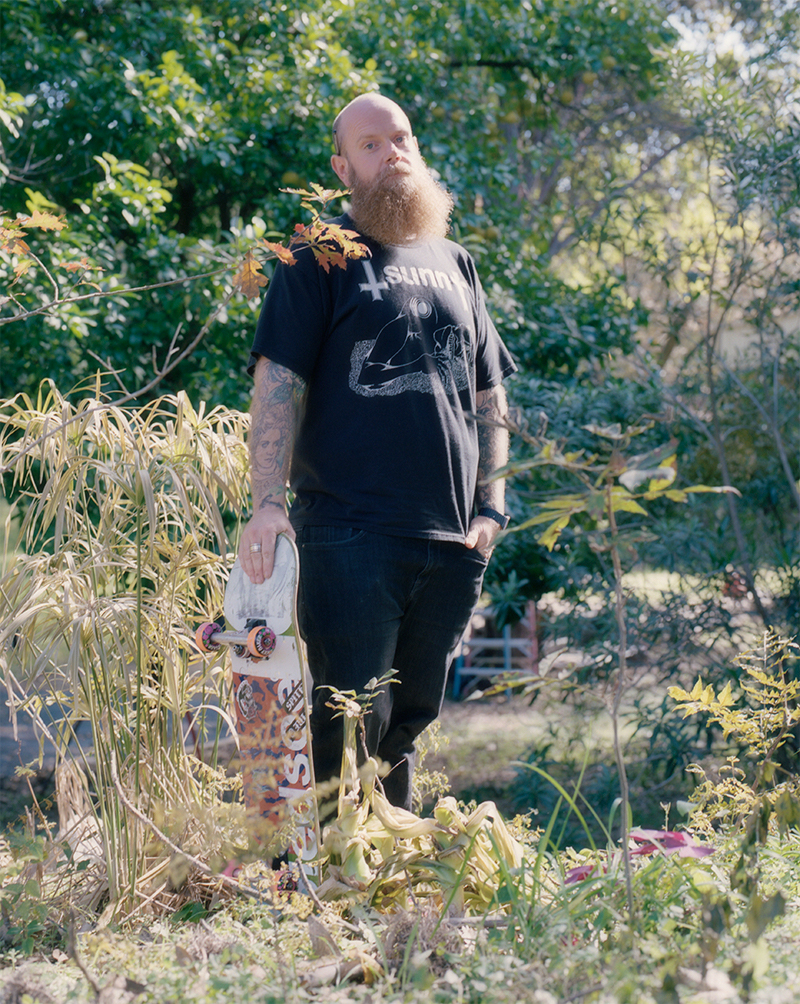

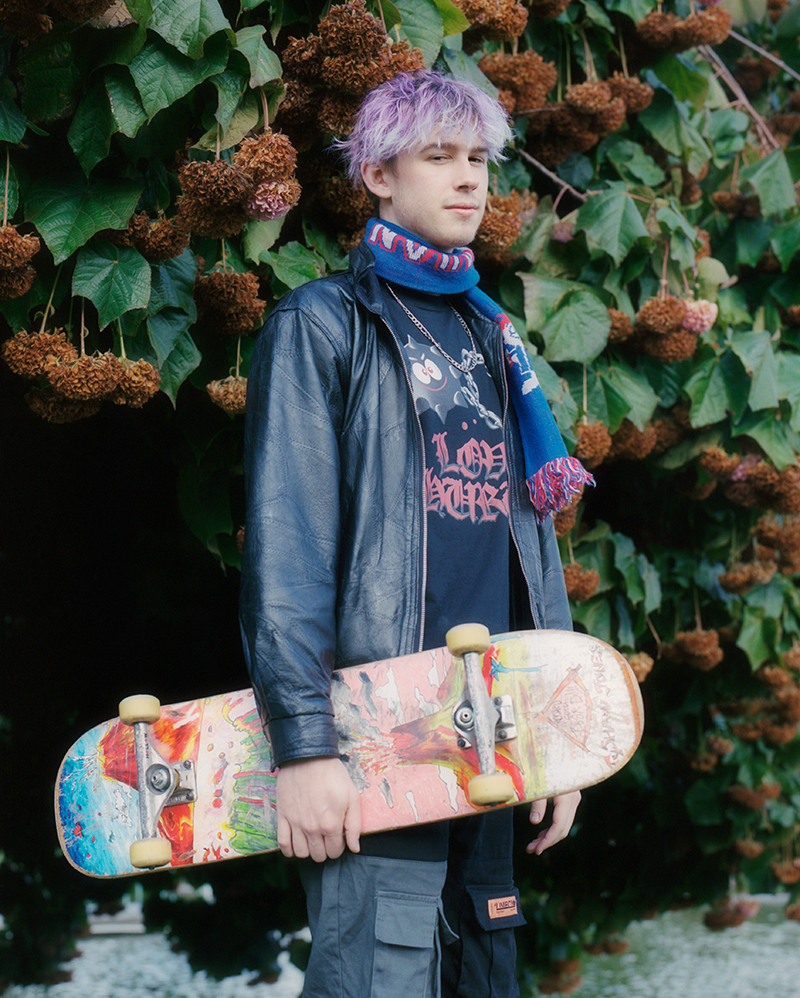
J: Having a creative community is really important. I’m curious – what would be the ideal form for these images to live in for you eventually? A web gallery, an exhibition, a book?
R: I would love to make a book, absolutely. With these pictures, I’m trying to make this primary source document of queer people in skateboarding, of this developing subculture. Queer people are making space for themselves in these environments that were interesting but not welcoming. A book makes sense for that; primary source documents are usually paper, usually something you can physically flip through or look back at to be like ‘oh! This happened.’ Not only printing these on paper but also printing on skateboards. I’ve included that in some of the grants I’ve applied for, but we’re still waiting.
J: Right, I would love to see them inserted into these skate spaces. I guess a project for another day. Thinking about now – what kinds of things are you thinking about now as you expand the edit of images?
R: It is definitely not done. I’ve photographed most in LA, NY, Atlanta, and London, so primarily large cities. I would like to photograph more people in less populated areas and get a feel for how those [queer skateboarding] communities are developing in areas that may be more conservative. I don’t think I’ve photographed in enough places to feel like this work is representing all of them. There are groups in Seattle, the Midwest, more in the south, and in Canada. Before I feel like I can put together a book or an exhibition or anything, I want to have those people represented as well. We have all of these groups wherever and we’re connected through social media, but I want these images to bring together these groups. While this is happening in all these separate places, it’s one joint effort. I mean when I can I ever say this project is done when there are countless people to learn from about their experiences with all the intersections of their identities in a skatepark? It’s daunting to think about how long I can go with it, but I’m still very excited about this project and want to keep going.
R: Last, I just want to extrapolate on some research that’s going into the project. I’ve been thinking a lot about queer temporality, how it was interesting comparing skateboarders to queer people in their experience of time. You would think that the cultures would kind of mesh because they’re both living these timelines that don’t line up with the standard narratives. Skateboarders that I grew up with and see now, their lives are structured around skateboarding. They work noncommittal careers so they can go on skate trips with people, and there’s still today a pushback against big corporations getting involved and [aesthetics] trickling down into large fashion companies. I was also reading about how all these sports have the potential to be counter-hegemonic but there’s always this exception that keeps them from being that. With skateboarding, it’s misogyny and homophobia. Like growing up in Tennessee and being queer, the way that you move your body is policed. At least for me, I would become disconnected from my body and not use it in the way that felt the most genuine to me. With skateboarding, you have to be fully in-tune with your body to do it, everything from your head to your feet. I move my body in a more authentic way, because even doing a trick if I look more feminine or throw in a limp wrist, it’s not weird if it’s in a skatepark. Because I was able to do that trick, all the sudden, the whole discourse using ‘fag’ doesn’t apply to me because I can kickflip.
J: That’s a specific and unique instance of code-switching and not a bad place to be moving forward with your work. Thank you for talking with A-B!
R: Thanks so much for the opportunity!

To view more of Ross Landenberger’s work or to inquire about participating in his project please visit his website.